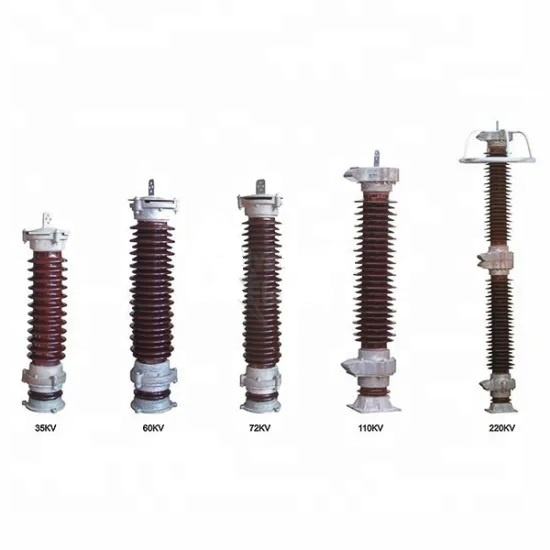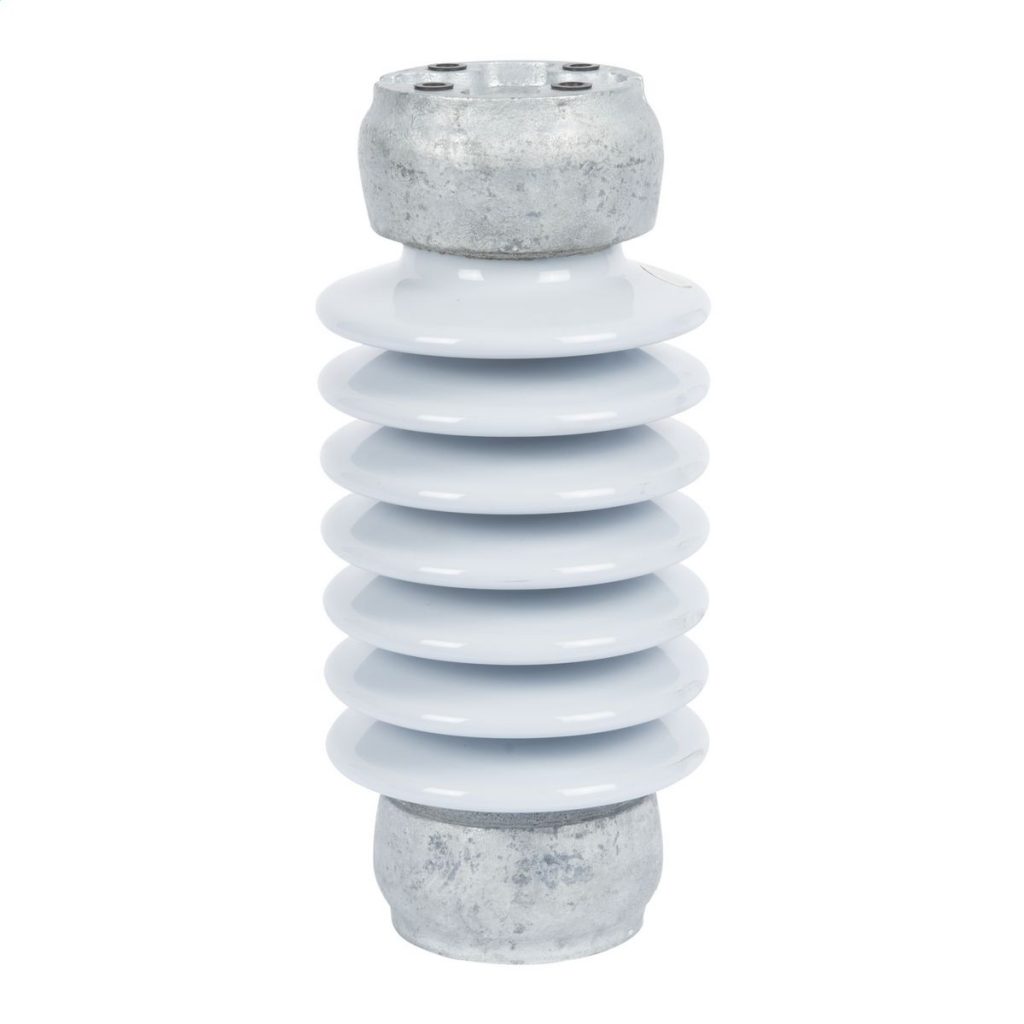Discover how Zinc Oxide Arresters provide core overvoltage protection for transmission lines and substations. Learn the differences between porcelain-housed and silicone rubber-housed arresters, and explore complete solutions from 0.22kV to 1000kV, including components like resistor discs and counters.

The “Voltage Stabilizer” of the Power System
Within the intricate power grid, overvoltages caused by lightning, switching operations, or faults constantly threaten the safety of transmission lines and substation equipment. These transient high voltages can break down insulation, leading to equipment damage and widespread blackouts. The Zinc Oxide Arrester is the primary defense, guarding the grid by “absorbing” these invisible surges. It doesn’t intercept lightning but intelligently shunts overvoltages, acting as the power system’s “smart voltage absorber.”
What is a Zinc Oxide Arrester? (It’s Not the Lightning Rod You’re Thinking Of!)
First, it’s essential to clarify: the Zinc Oxide Arrester we are discussing is a precision electrical device installed on transmission towers, substations, and distribution lines to protect valuable assets like transformers and switches. It is fundamentally different from the lightning rods on building roofs.
Its core component is a resistor disc sintered primarily from Zinc Oxide (ZnO). This material possesses remarkable non-linear voltage-current characteristics: under normal system voltage, it exhibits extremely high resistance, acting almost as an insulator. However, when an overvoltage occurs, its resistance instantly plummets, rapidly conducting and diverting the overvoltage energy to the ground, before immediately returning to its high-resistance state. This entire process happens within microseconds, silent and unseen, yet critically important.
Why Choose a Zinc Oxide Arrester? Unveiling its Core Technical Advantages
Compared to traditional silicon carbide arresters, zinc oxide arresters represent a revolutionary advancement:
- Gap-Free Design: Simpler structure, faster response, no follow current issues, and more stable protective characteristics.
- Excellent Non-Linear Characteristics: Provides a flatter voltage protection level, meaning protected equipment experiences lower overvoltages.
- Strong Energy Absorption Capacity: Capable of withstanding multiple consecutive lightning strikes or switching surge impacts.
- Superior Pollution Performance: Particularly for silicone rubber-housed arresters, their excellent hydrophobicity ensures outstanding performance in harsh environments.
Porcelain-Housed vs. Silicone Rubber-Housed: How to Choose the Right One for Your Project?
We offer two main types of housing to meet the needs of different application scenarios:
| Feature | Porcelain-Housed Zinc Oxide Arrester | Silicone Rubber-Housed Composite Arrester |
|---|---|---|
| Mechanical Performance | High compressive strength, but brittle, susceptible to impact | Lightweight, flexible, impact-resistant, excellent explosion-proof performance |
| Pollution Flashover Performance | Standard, requires periodic cleaning or relies on creepage distance design | Excellent, natural hydrophobicity, strong anti-pollution flashover capability |
| Weathering & Aging | Stable, but sheds can be damaged by thermal cycling or external force | Excellent, UV resistant, corrosion resistant, integrally molded |
| Weight & Installation | Heavy, requires more careful installation | Lightweight, significantly reduces installation difficulty and cost |
| Application Scenarios | Traditional substations, areas with low mechanical stress, lighter pollution | High-speed railways, coastal areas, heavily polluted areas, compact substations |
Selection Guide:
- For Ultra-High Voltage (UHV), Extra-High Voltage (EHV) substations, and traditional projects prioritizing long-term operational stability, porcelain-housed arresters remain a classic and reliable choice.
- For medium-high voltage transmission and distribution lines, severely polluted environments, space-constrained urban substations, and situations requiring seismic and explosion-proof performance, silicone rubber composite-housed arresters offer greater advantages.
Our Comprehensive Solutions: From Complete Units to Components, Covering 0.22kV to 1000kV
We understand that every grid project is unique. Therefore, we offer unparalleled flexibility:
- Complete Voltage Range Coverage: From low-voltage 0.22kV distribution protection to core grid levels like 10kV, 35kV, 110kV, 220kV, 500kV, and up to the top-tier 1000kV UHV领域, we possess a full series of Zinc Oxide Arrester products, ensuring precise protection for any voltage level.
- Complete Arrester Supply: We supply high-quality porcelain-housed and silicone rubber-housed complete arresters compliant with IEC, IEEE, GB, and other international standards, all undergoing rigorous type and routine tests before shipment.
- Comprehensive Components & Services: Beyond complete units, we are your reliable source for spare parts and components:
- Zinc Oxide Resistor Discs: The core heart of the arrester; we offer various sizes and performance grades.
- Silicon Carbide Resistor Discs: Support for customers who still need replacements for traditional arresters.
- Discharge Counters: Used to record the number of arrester operations, crucial for condition monitoring.
- NEMA Mounting Brackets & Custom Brackets: Standardized mounting solutions ensuring stability and safety.
- Disconnectors: Automatically isolate a failed arrester from the system, providing visual fault indication and isolating the faulty equipment.
Key Application Areas
- Power Plants: Protecting generators, step-up transformer stations.
- Substations: Shielding main transformers, shunt reactors, GIS equipment.
- Transmission Lines: Defending against direct lightning strikes and induced lightning overvoltages.
- Distribution Networks: Safeguarding distribution transformers, switchgear, and cables.
- Industrial Sector: Providing customized protection for power equipment in industries like mining, steel, and chemicals.
Frequently Asked Questions (FAQ)
Q1: What is the purpose of the discharge counter on the arrester?
A: It records the number of operations and approximate current levels, providing vital data for assessing the frequency of overvoltages on the line and the arrester’s operational status. It should be checked regularly.
Q2: Do arresters require regular maintenance?
A: Yes. Although metal oxide arresters are considered maintenance-free, periodic inspections (checking for housing damage, pollution levels, recording counter readings) and preventive tests (measuring leakage current, resistive current) are crucial for ensuring long-term reliability.
Q3: How can you tell if an arrester has failed?
A: Visible physical damage (e.g., cracked housing), abnormal discharge counter readings, online monitoring systems showing a significant increase in resistive current, or electrical parameters exceeding standards during preventive tests can all be signs of failure.
Q4: Why does an arrester need a Disconnector?
A: A Disconnector (or Arrester Disconnector) is a safety device. If the arrester shorts internally due to a fault, the disconnector operates to physically isolate the failed arrester from the power grid. This prevents a sustained fault from affecting the system and provides a clear visual indication of the fault location.
On the path to achieving absolute grid safety and reliability, choosing a technologically advanced, comprehensively capable, and reliably serviced partner is paramount. Our Zinc Oxide Arrestersolutions, with their full range from low voltage to UHV, two mature housing technology options, and a complete supply chain from units to components, provide you with a one-stop answer for overvoltage protection.
Whether you need top-tier 1000kV porcelain-housed arresters for a new UHV project, reliable silicone rubber arrester components for an existing substation, or require technical consultation, we can provide the perfect solution. Contact us today for exclusive product catalogs and technical support.


